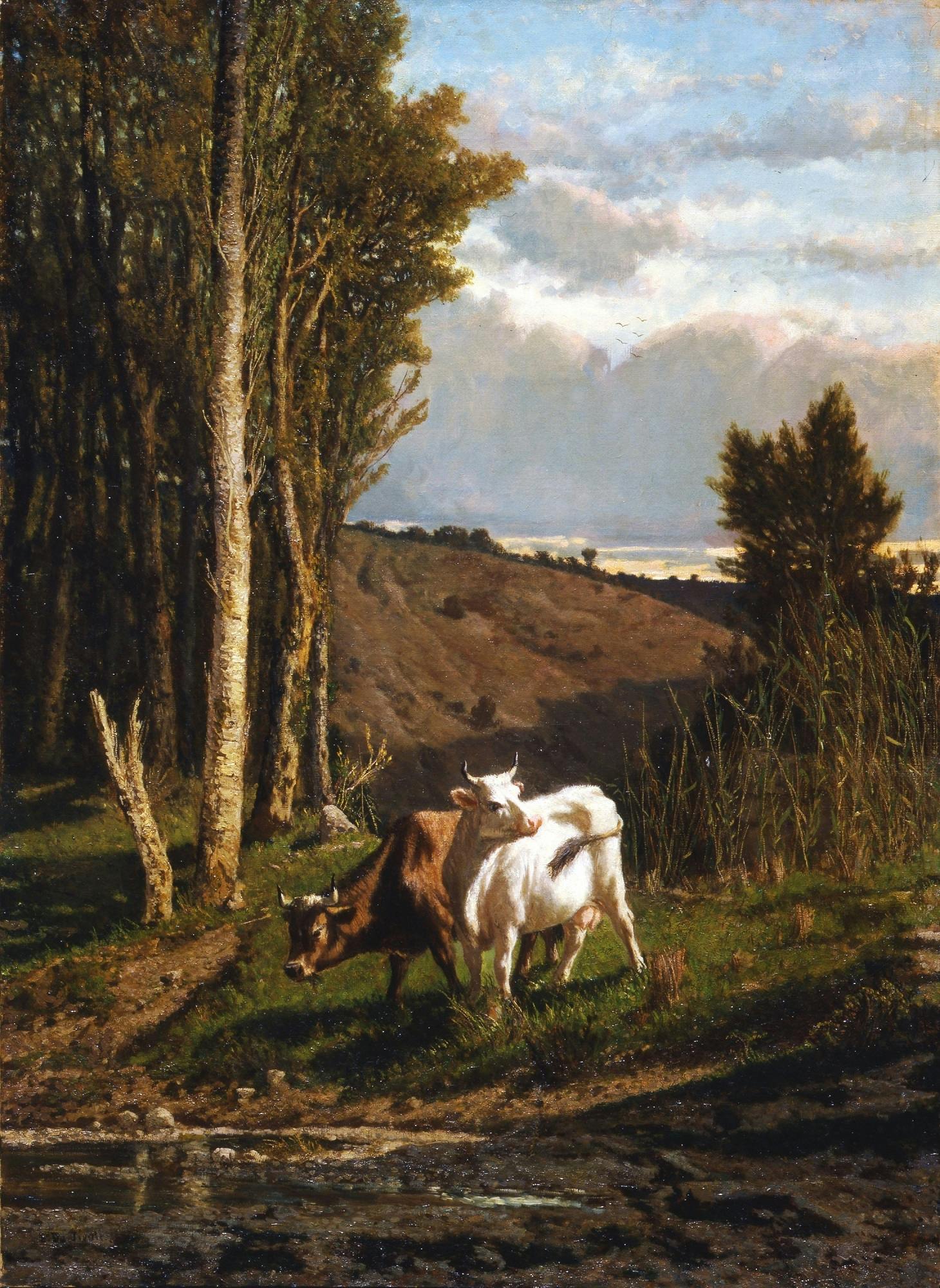A Pasture
Serafino De Tivoli (Livorno 1826 – Florence 1892)
bottom left: “S. De Tivoli”
This work shows how the artist assimilated his French experience (Paris, 1855) and specifically, his knowledge of the Barbizon School, together with his research into landscape, carried out in Tuscany as part of the so-called School of Staggia Senese, of which he had been a part.
In the period 1854 to 1859, much was said in Florence’s meeting place for artists - Caffè Michelangelo - about the renewal of landscape painting as a genre through en plein air painting and the use of ton gris. This new technique, introduced by French landscape artists, made it possible to create painted effects through a marked use of chiaroscuro, reflecting images of real life onto a blackened mirror so that the colours would be softened, causing volumes and contrasts in light to emerge. Serafino De Tivoli’s fervid participation in these discussions on art led to him being nicknamed the “father of the macchia”, as Telemaco Signorini recalled. This work, which Adriano Cecioni calls a “slice of real life, seen from the window”, shows how the artist had overcome romantic elements in favour of a closer observation of reality.
